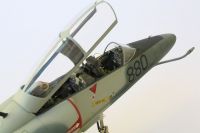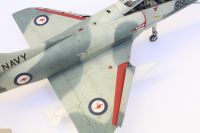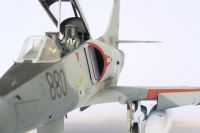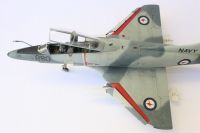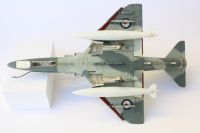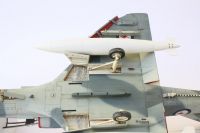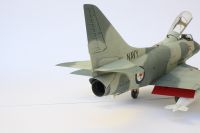Hasegawa 1/32 TA-4G Skyhawk
By Mike Prince
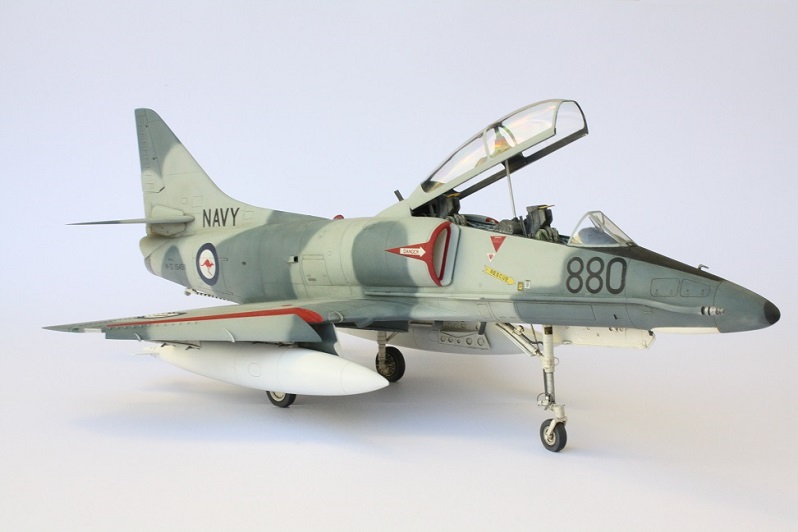
Introduction
A brief history of Skyhawks in the Royal Australian Navy (RAN) was included in my previous article.
Included within the Skyhawk fleet were four TA4G used ashore in the training role at the Naval Air Station at Nowra, New South Wales. The two-seaters were never operated from the carrier HMAS Melbourne as there were fears the carrier was too small, having been designed and part built during WW II, then completed with an angled flight deck in the early 1950s. The particular problem was the length of the flight deck and the forward centre of gravity of the two seater compared to the single-seater. This impacted on the ability of the two-seater to rotate and lift off within the short flight deck length in the event the aircraft missed the arrester wires. With their much bigger carriers, the US Navy didn’t have the same problem.
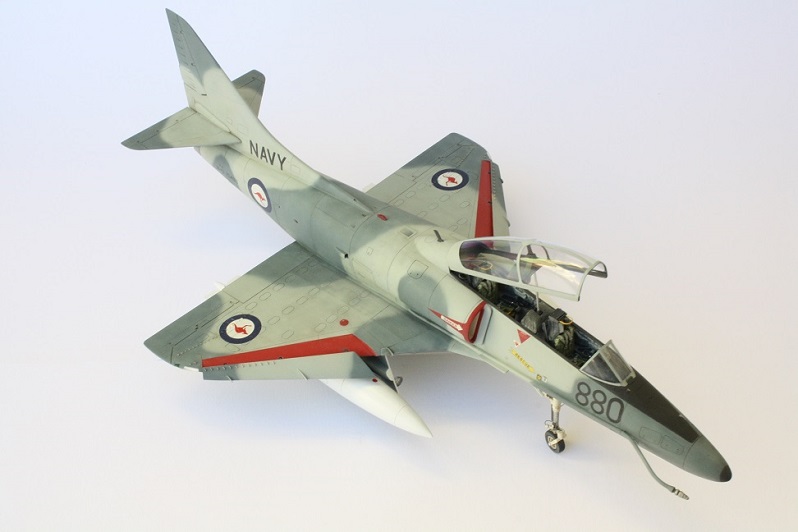
‘880’ was one of the aircraft sold to the Royal New Zealand Air Force (RNZAF) where they were added to their existing fleet and were later significantly upgraded. Following cessation of all RNZAF fast jet operations ‘880’ remained in storage for several years awaiting a buyer, but the aircraft has recently been donated to the naval aviation museum at Nowra, back where it served many years earlier. This included being repainted into the two-tone wrap around scheme applied late in its Australian career, and a number of external changes to bring it back to something closer to its earlier TA4G configuration.
The Kit
The Hasegawa TA-4J is the only choice for a two seat Skyhawk in this scale. The outline is good, the key access panels on the fuselage are engraved (unlike their single-seater), but the kit is much simpler than the Trumpeter A4 kits. However, with a bit of work a fine model can be made, and as I wanted to sit mine beside a Trumpeter one, I wanted the level of detail to be comparable. Improvements from the OOTB offering included:
- Full engraving;
- Detailed kit cockpit plus Wolfpack resin seats (the Avionic cockpit arrived very broken and warped, as well as reflecting a ‘J’ model behind the seats (I think) – at the very least, photos showed it to be quite different to a G / K version);
- Opened the air intakes and added trunking from very thin sheet plastic back to an engine face (spares box);
- Jet pipe and extreme rear of fuselage revised from oval to round (just apply pressure and bend it);
- Step removed from behind the wing flaps (same method as for the A4G);
- Flaps separated and dropped (separated from the wing then thinned, while a new wing upper surface over the flap area was cut from sheet plastic and glued in place);
- Bolt heads added around the fuselage break line (fine wire);
- Main wheels well detailed (enough to avoid looking empty) and hydraulic lines added to the legs;
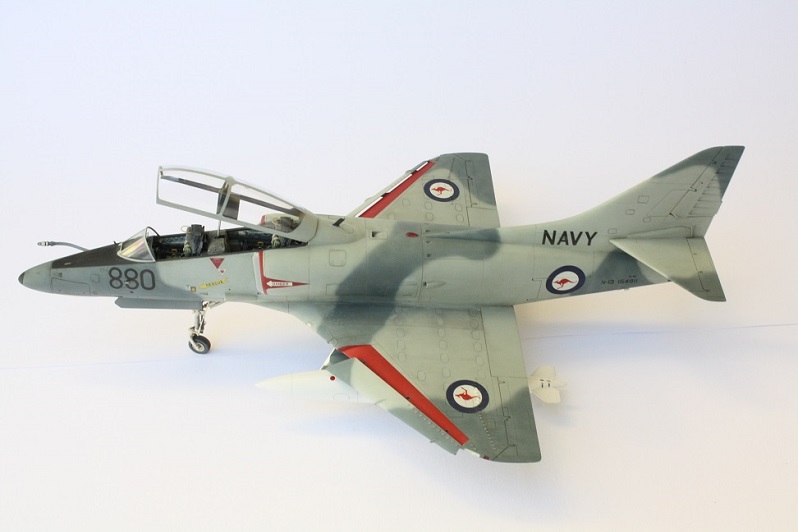
Painting
All painting was done with enamels. I tend to simply go with what looks right, as weathering can change colours considerably. For base coats I used a light grey mixed from USN Compass Grey (FS something or other) and white, while the dark grey was Humbrol’s version of USN Intermediate Sea Blue. Both had lighter and darker patches and blotches applied over the base coats, as well as a bit of dry brushing with white to give a slightly streaked effect. The walkways were done with a light coat of very dark grey, with most rubbed off with micromesh cloths. Panel line washes were largely limited to access panels rather than fixed ones, trying to keep the wash subtle.

Markings
Markings came from the Aussie Decals sheet.
Conclusion
Again, a most enjoyable kit to build – there’s something quite rewarding in taking an older kit and bringing it up to a standard where it can be displayed happily in amongst more modern offerings.
References
Phantom, Hornet and Skyhawk in Australian Service, Stewart Wilson, Aerospace Publications
© Mike Prince 2014
This article was published on Thursday, July 03 2014; Last modified on Thursday, July 03 2014

